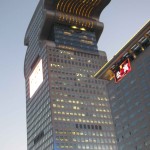
This gallery contains 7 photos.
Okay, folks. This will be my last travelogue on China. I hope I haven’t bored you to death or driven you off. But it was an amazing trip and so many people have asked about it and asked that I … Continue reading


This gallery contains 7 photos.
Okay, folks. This will be my last travelogue on China. I hope I haven’t bored you to death or driven you off. But it was an amazing trip and so many people have asked about it and asked that I … Continue reading
The Yangtze River
The three Gorges Project on China’s Yangtze River is the largest hydro-electric project in the world, in terms of installed capacity. Appropriate for the country with the largest population in the world.
Fully operational in 2009, fourteen years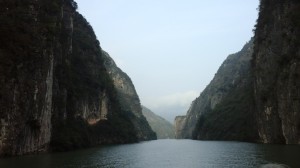 after start-up, the dam now backs up as much as 32 million acre feet of water. But to create such a reservoir, it was necessary to relocate over 1.3 million people. When filled, it flooded about 244 square miles.
after start-up, the dam now backs up as much as 32 million acre feet of water. But to create such a reservoir, it was necessary to relocate over 1.3 million people. When filled, it flooded about 244 square miles.
To 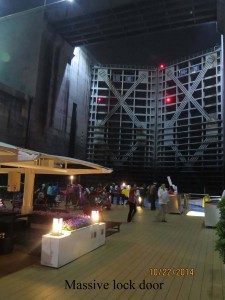 negotiate the 360 feet difference between the downstream river and the upstream river, a system of five gigantic locks were built for each direction. These allow for multiple ships to move upriver at the same time multiple ships are moving downriver. Each ship will require approximately four hours to pass through
negotiate the 360 feet difference between the downstream river and the upstream river, a system of five gigantic locks were built for each direction. These allow for multiple ships to move upriver at the same time multiple ships are moving downriver. Each ship will require approximately four hours to pass through 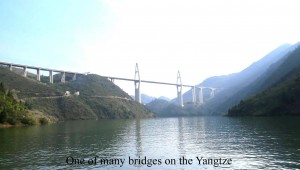 all five locks.
all five locks.
To help speed things up, a ship lift has been built which will cut the time to traverse between the two levels to about thirty-seven minutes. However, the elevator will handle only ships with gross weights between one thousand tons and three thousand tons. Of course, the elevator also has to haul the water necessary to float a three thousand ton vessel. Impressive. At the time we were there, the elevator was complete but had not been put into operation.
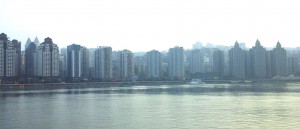 Now, five years after completion of the Three Gorges Project, several million Chinese live on the banks of this fourth longest river in the world. In some area, hundreds of twenty-five to thirty-five story apartment and condo buildings line the banks. Huge bridges tower over the waterway with amazing frequency. Unfortunately, even on the Yangtze, pollution is a serious problem.
Now, five years after completion of the Three Gorges Project, several million Chinese live on the banks of this fourth longest river in the world. In some area, hundreds of twenty-five to thirty-five story apartment and condo buildings line the banks. Huge bridges tower over the waterway with amazing frequency. Unfortunately, even on the Yangtze, pollution is a serious problem.
The scenery through these gorges is spectacular. Sheer 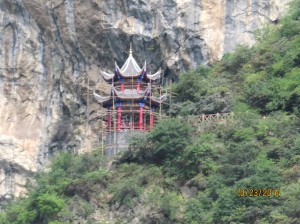 cliffs cascade to the water, sometimes allowing a narrow road to pass; sometimes not. As you float along, ancient pagodas high on the mountains are highlighted against the sky. And while modern architecture can be seen from almost any point on the river, the influence of ancient China is evident everywhere.
cliffs cascade to the water, sometimes allowing a narrow road to pass; sometimes not. As you float along, ancient pagodas high on the mountains are highlighted against the sky. And while modern architecture can be seen from almost any point on the river, the influence of ancient China is evident everywhere.
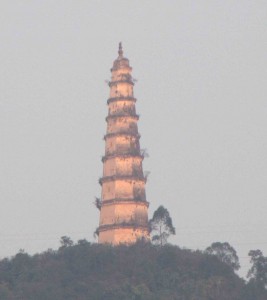 Our four days on the Yangtze River were a constant exposure to nature’s grandeur and beauty. As visitors, we could ignore the tremendous economic value of this section of river. But the striking beauty and the closeness to ancient China made this yet another highlight of our visit to China.
Our four days on the Yangtze River were a constant exposure to nature’s grandeur and beauty. As visitors, we could ignore the tremendous economic value of this section of river. But the striking beauty and the closeness to ancient China made this yet another highlight of our visit to China.
Please leave me a comment on China and the Yangtze, and “like” or “share” this post. Thank you.
Jim Callan
I don’t want to make this blog a travel log. But a number of you have asked about the trip and China. So I will do a few posts on China, maybe on an every other week basis. And I’ll try to keep them brief.
First the overall look. We spent three weeks visiting Beijing, Xi’an, Hangzhou, Shanghai, Yichang, the Yangtze River, the Three Gorges project, Chongqing, Guilin, and Hong Kong. We flew between most stops, cutting down travel time. Between Hangzhou and Shanghai, we took a 180 mph, very smooth train.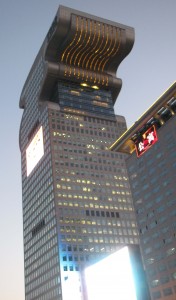
Let’s start with Beijing. A city of 21 million, it is modern, clean, with a lot of beautiful landscaping and amazing architecture. We saw more imaginative architecture in Beijing that in all of the U.S..
Tian’an Men Square, the largest such square in the world, is a vast open concrete area flanked by Mao’s mausoleum, the China National Museum and 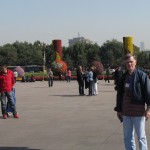
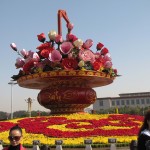 various government buildings. Here are two pictures we took in the square.
various government buildings. Here are two pictures we took in the square.
Close by is the Forbidden City, the exclusive domain of the imperial court of China for 24 emperors over a period of 500 years. Completed in 1420, it provides a wealth of magnificent imperial architecture. 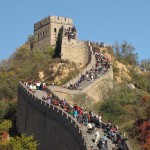
And of course, The Great Wall. Construction on this phenomenal structure started roughly 700 years before Christ and continued for nearly two thousand years, although it’s generally dated back to 200 B.C. Most of what survives today was built during the Ming Dynasty (1368 to 1644 A.D.). During the Cultural Revolution (late 1960s), the Chinese were encouraged to take bricks from the wall to build their houses.
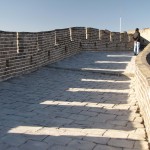 It is generally considered to be about 4,000 miles long. It is roughly 25 feet high and varies in width from 15 feet to 30 feet. As many as 63 million people visit the wall in a year. We walked part of the wall.
It is generally considered to be about 4,000 miles long. It is roughly 25 feet high and varies in width from 15 feet to 30 feet. As many as 63 million people visit the wall in a year. We walked part of the wall.
One of the things that impressed us was the sense of history here. The people think of how things fit into the dynasties. They talk about things that happened 3,000 years ago. All in all, an impressive country, whether you like its manufacturing, its politics, or its current activities.
More in two weeks. Please ask questions if you’d like, and let me know if you want more on China or if I should just stop. Thanks.
Jim Callan